Submitted by Berrin Chatzi Chousein
The extent of destruction is "a collective complicity" say Turkish architects
Turkey Architecture News - Mar 18, 2023 - 16:03 5058 views

Uncontrolled urbanization and construction, ignorance, incompetency, unskilled labor force, the lack of technical know-how of architects and engineers are few of major consequences of the devastating Turkey-Syria earthquake, according to Turkish architects.
While the architects argue that the destruction caused by the earthquake erose from negligence and "a systematic collapse" in the production and construction chain, they also underline that it resulted in a "collective complicity in relation to the form of production".
In addition, the architects believe that catastrophic urbanization policies guided by the political will, the collapse of architectural education system, construction amnesties and the implementation of urban renewal plans have exacerbated the destruction to a large extent.
Emre Arolat: "Collective complicity"
"The problem is unfortunately not solved by these [contractors] arrestments, because they are not the only culprits of this morbid production chain," said Emre Arolat, founding partner of Emre Arolat Architecture.
"I do not agree with the widespread opinion that the building bylaws in use today are insufficient within the framework of seismicity at all."
"There is a lack of a specificity and diversity that is adaptable to local conditions," he added.
"It would not be wrong to use the term ‘collective complicity’ in relation to the form of production that has been valid in this sector for the last fifty years," he told World Architecture Community.
"This earthquake was not a surprise," he said.
Referring the 1999 Turkey earthquake, the architect underlined that "it was possible for the rulers of this country to rehabilitate many building stocks in Turkey after this period, especially in places where there are active fault lines."
"This period could have been made use of more efficiently and in line with scientific truths, the laws passed could have been abided by, where the lack could have been amended if needed and the necessary arrangements could have been completed," Arolat explained.
"If the construction process in the recent twenty years was conducted in accordance with the norms of universal design, production and supervision, the catastrophic situation today could have been prevented and the destruction would not have been this tremendous."
He believes that "instead of recovering the existing building stock, many new ones were added to the defective structures and this inevitable destruction occurred."
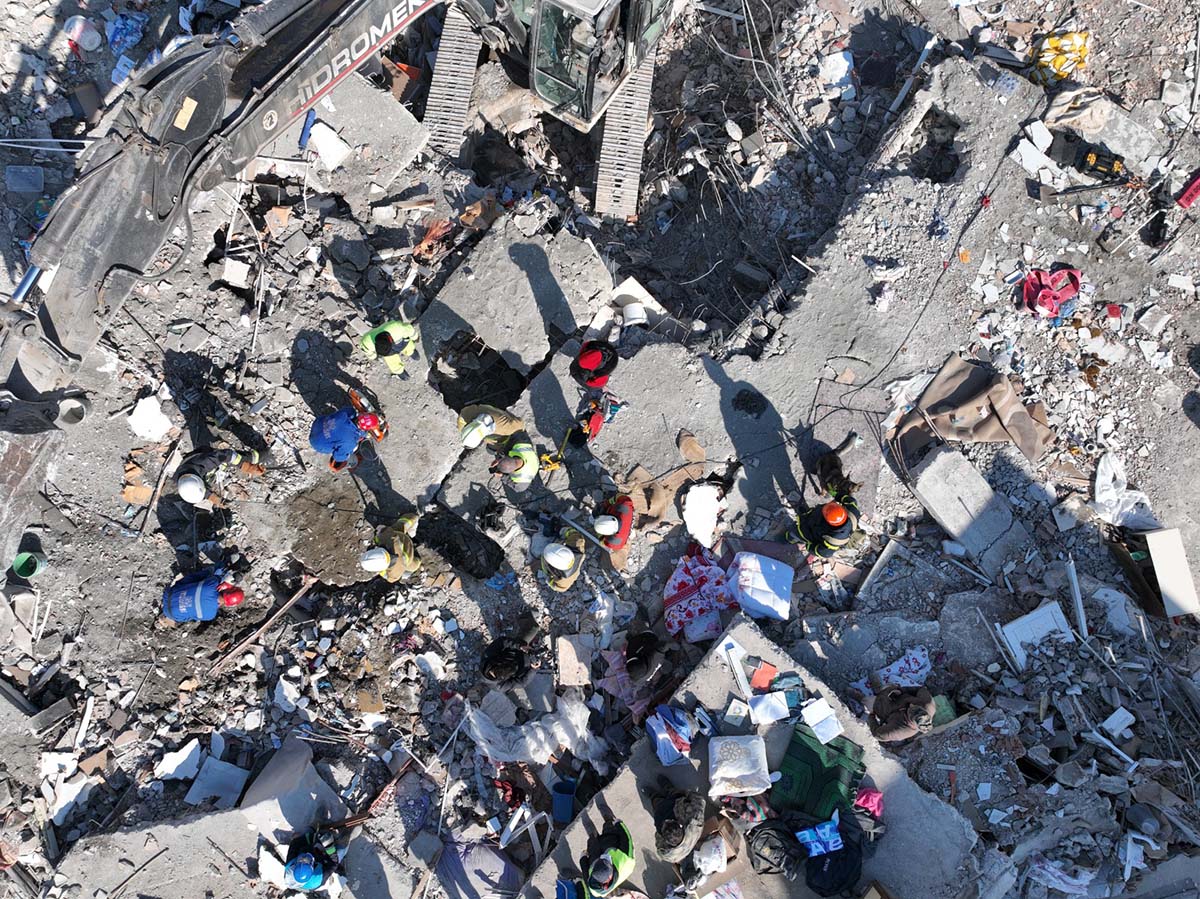
Emergency Service of Ukraine conducts search and rescue work in Hatay Province (February 15, 2023). Image by State Emergency Service of Ukraine (CC BY 4.0) via Wikimedia Common.
Besides "irresponsibility, negligence, unlawful behavior, incompetence, ignorance", there are multipartite participants that make up parts of this chain in the space-making domain, the architect added.
According to the architect, they are "Citizens" who intentionally manipulate the information on the land register of the property they have purchased and do not request for a building license."
"Property Owners who are aware that the apartment they live in will probably collapse even in a small earthquake but continue to inhabit in it." "Bureaucrats who profit from these mistakes." "Engineers who do not hesitate to approve momentous buildings despite having scanty experience."
Moreover, "Local Administrators who grant approval by ignoring faulty elements due to lack of the essential competence," he continued.
The architect also held Contractors and Building Inspections Companies responsible for the destruction, and added: "Contractors who raise buildings based on those projects along with the cheapest rock bottom workforce and materials of questionable quality." "Building Inspection Companies that receive payment without even visiting the construction sites although they should control those contractors."
Lastly, "the Political power that blatantly legitimizes this system, legalizes all this disgrace in a moment for the sake of collecting votes, and announces the construction amnesties," Arolat added.
On the other hand, the architect emphasized that this situation is not valid for the whole country. "There are also highly qualified buildings developed by groups that perform their profession properly, and plan, design, fabricate and inspect in accordance with universal criteria," he said.
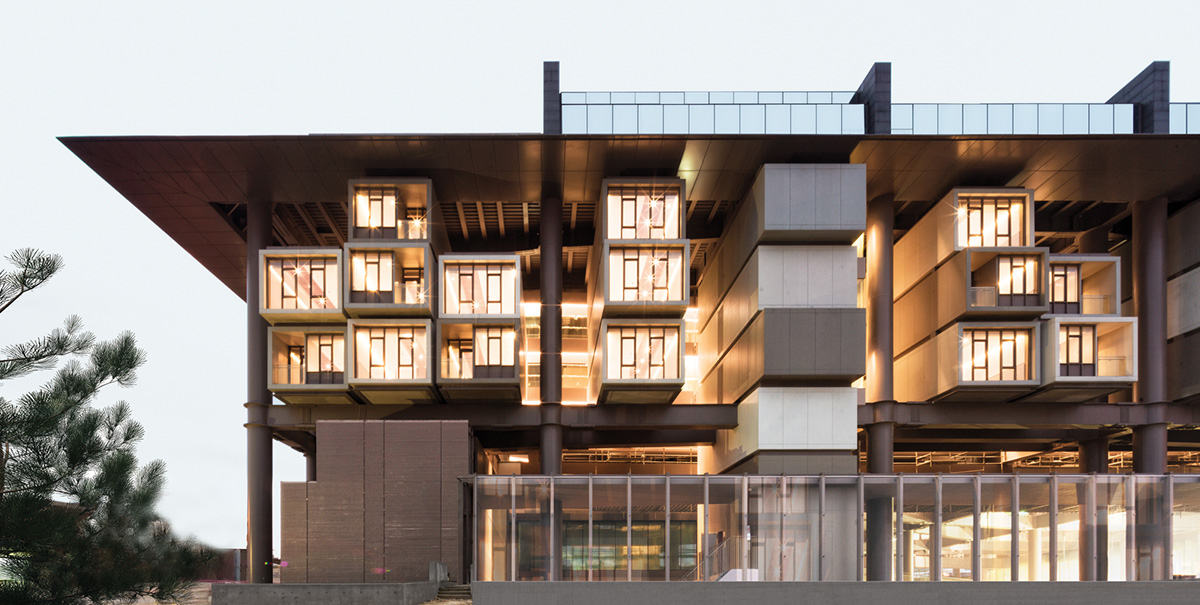
Emre Arolat Architecture built The Museum Hotel Antakya in 2019. The building sits on a steel grid where the rooms and common areas of the hotel are lifted from the ground. Image © Cemal Emden
The architect added that "the systems regarding production and inspection processes in the construction industry in Turkey should be considered as a whole."
Arolat, who is the architect of The Museum Hotel Antakya, situated in one of the earthquake provinces, told World Architecture Community that he evaluated the current condition of the museum with Bülent Deveci, who served as the Civil Engineer of the project.
He said, there was no visible damage to the building's main structural system, although there was some damage that could be considered as secondary in the interior finishes and furniture.
"Nevertheless, all connection points of the structural system, which is constructed in steel to a great extent, must be reviewed very meticulously in accordance with universal norms, and tested at necessary points," he explained.
"As a result of all these tasks, it will be clear when it is possible to reopen the building for use."
"The city is not merely a physical organism"
The architect also believes that it is too early to build permanent structures for the next phases. Instead, he said, temporary housing solutions should be provided - at least for a few years, referring to the question of how viable solutions should be provided after the earthquake.
"The next step should enable the disaster victims to inhabit in housing solutions that are still temporary but have more preferable physical and social infrastructures," he continued.
"However, in this context, major demographic shifts should be avoided and prevented."
"After a few years of this temporary situation, housing solutions should be provided that will meet the permanent shelter necessities of the victims in a far more elaborated way."
"The city is not merely a physical but also a cultural and social organism. You cannot create it by simply designing the physical structure. This formation also requires a strong and willed administrative establishment," the architect added.
"A work group of earth scientists, experts from related engineering branches, sociologists and anthropologists, professionals of education, actors of the cultural industry in various routes, physicians, psychologists, past and potential users of the city, relevant non-governmental organizations and thus leaders of different religions existing in a region like Antakya, should be formed and a favorable working time should be given," Arolat concluded.
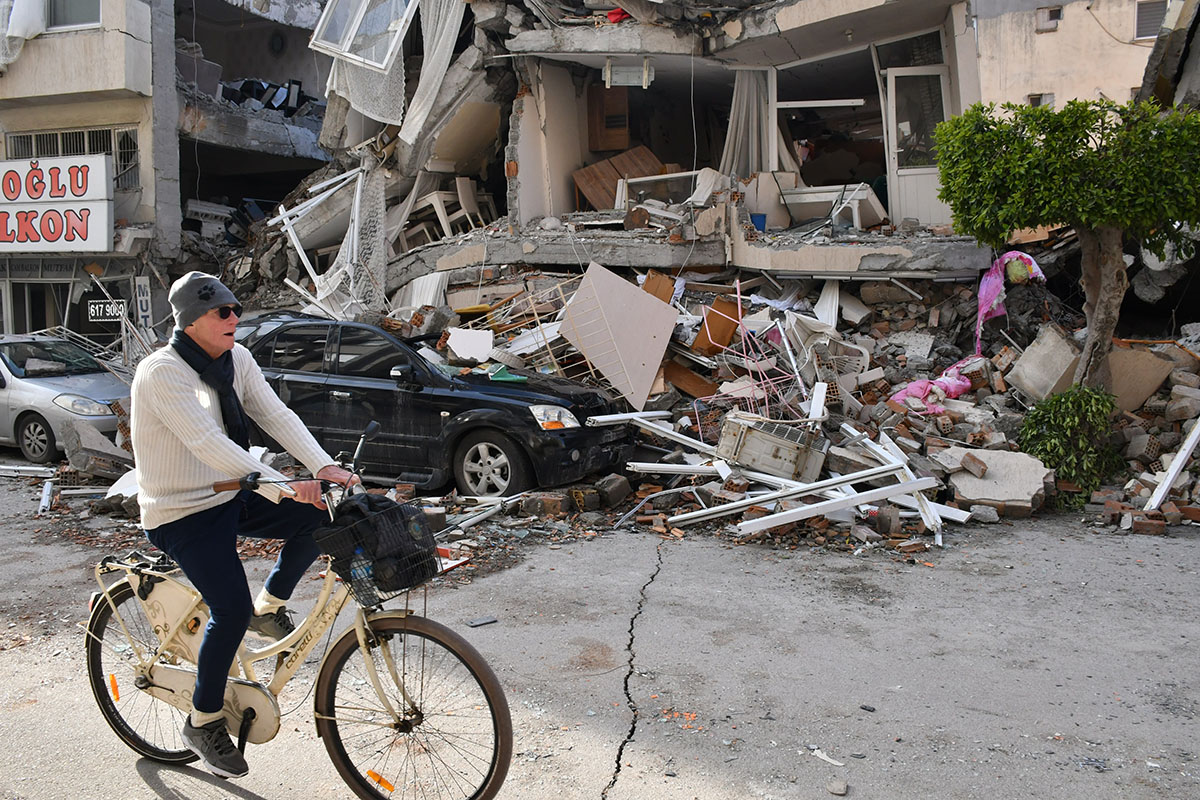
View from a collapsed building in Iskenderun, Hatay. Photography © Çağlar Oskay via Unsplash
Melike Altınışık: "Earthquakes never kill"
Melike Altınışık Architects – MAA founder Melike Altınışık, who agreed with Arolat, stated that "unconsciousness, ignorance, unsystematic urbanization and uncontrolled construction that have spread to the whole society in layers causes such an extensive destruction."
"Buildings built with competent architecture, competent engineering, competent construction and competent control mechanism do not collapse even if they are directly on the fault line," Altınışık, who is the architect of the 369-meter-tall futuristic Istanbul TV and Radio Tower.
"The buildings that have not been demolished today are proof of this fact," she added.
The architect believes that the history itself can be a proof of this situation. "Despite these enormous disasters in history, civilizations continued to establish their settlements and cities again and again around those fault zones," she told World Architecture Community.
"Nearly 90% of our cities are located on or around these fault lines. It looks like people will keep living in those earthquake zones as long as the conditions of "Earthquake Resilient Urban Planning" are matched with the improvements in science and engineering solutions."
"We should also hold the mirror to ourselves"
"We should also hold the mirror to ourselves, rather than blaming the contractors, who are the last part of the chain," said Altınışık.
"In any circumstances people who are not competent should not be given the right to be a part of this system, professional internal audit and training mechanisms should be made operational," she added.
The architect, who criticizes all professional bodies in the production and control mechanisms in this chain, including architects, believes that the level of architectural education and awareness and educating society can help reverse the blind-side of the implementation of urban policies.
"Earthquake Resilient Urban Planning"
Altınışık emphasized that permanent housing construction should not be started in earthquake zones with an unplanned rush.
According to the architect, comprehensive urban planning solutions consisting of micro-zoning analyses should be implemented for permanent settlements that "will meet the conditions of of "Earthquake Resilient Urban Planning".
"In the first stage, it is important to establish tent cities with a correct settlement planning, and then temporary container houses settlements should follow it quickly," said the architect.
"It is important that the management of this process should be handled in a way that can produce a long-term permanent solution," she said.
"We need resilient urban system designs that can create micro-communities, micro-economies, and where nature, environment and climatic sensitivities will be implemented in to the process with scientific solutions."
"Climatic disasters that involve also the whole world such as floods, fires, storms are increasing day by day. In this context, considering the increasing climatic disasters in an earthquake country like Turkey, a supra-political Ministry of Disaster must be established," Altınışık concluded.
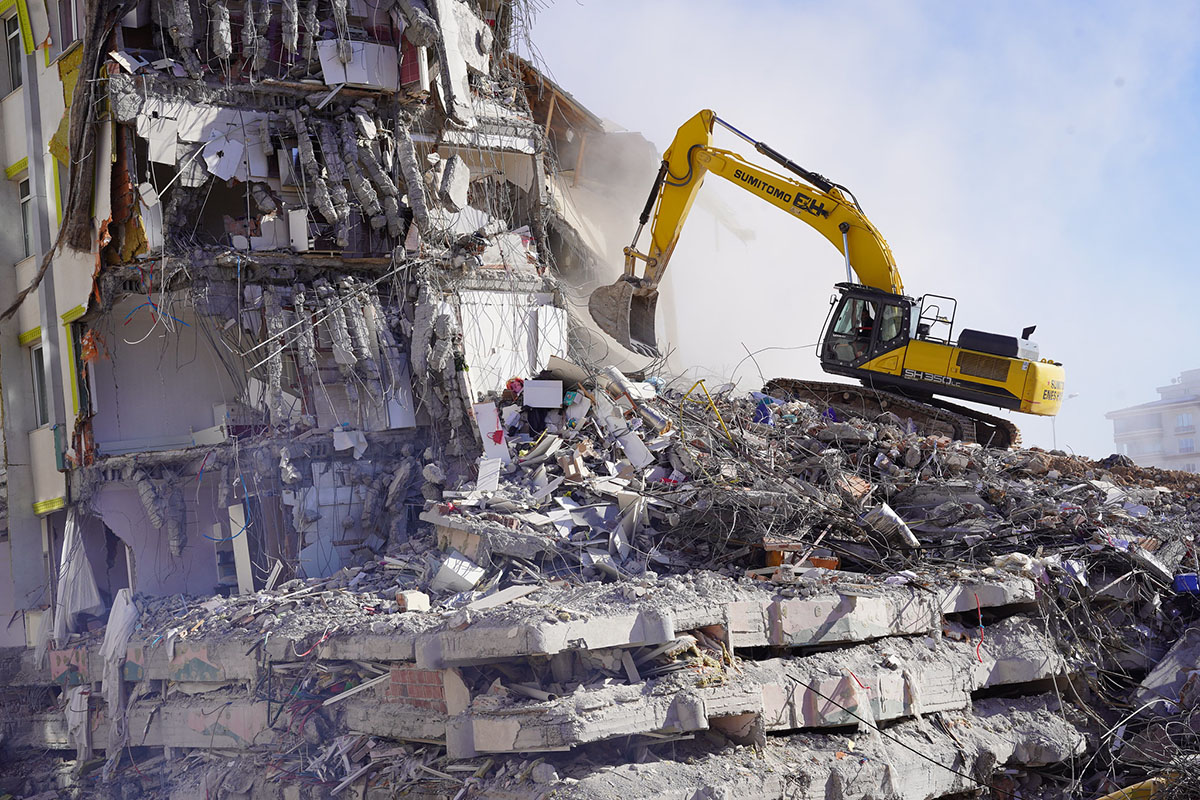
View from earthquake debris in Turkey. Image © Lisa Hastert/European Union, image via Flickr/EU Civil Protection and Humanitarian Aid (CC BY-ND 2.0)
Alper Derinboğaz: "Uncontrolled urbanization"
Alper Derinboğaz, the founder of Salon Alper Derinbogaz, underlined that the reason of the destruction could not be based on numerical values such as the earthquake's intensity, proximity to the earth, area of influence, acceleration, and period, and pointed out the poor quality of the buildings.
"The extent of damage is, unfortunately, due to the poor quality of the buildings in the region," he told WAC.
"The fact that one building in the same topography was standing still in the earthquake zone while the other collapsed also explains this situation."
Derinboğaz believes that the construction and design process are managed by contractors, resulting in buildings that are not durable but whose poor quality is well concealed.
"In addition to all this unqualified production, giving a building registration certificate under the name of "construction amnesty" to illegal buildings that do not comply with the regulation paves the way for uncontrolled urbanization," he added.
"In the zoning amnesty law enacted in 2018, more than 7 million buildings most of which are in residential status were licensed, according to Alper Derinboğaz. "It is seen that more than 20 laws regarding zoning amnesty have been enacted in Turkey since 1948," he emphasized.
"A new insurance system"
The architect argued that a new insurance system should be introduced in order to prevent further negligence in the production chain.
"I think the solution is to introduce a new insurance system through insurance institutions with international validity," the architect explained. "Buildings without insurance should not be used," he added.
"In order to carry out universal production processes, construction, and inspection norms, the architects and engineers who design it must control the building until the end and they must be held responsible for possible demolition," according to the architect.
He stated that "zoning issues should not be a method of financing politics." According to Derinboğaz, "there are approximately 453 thousand 497 contractors in Turkey with a population of 85 million, based on January 2020 data. "This means that there are 10 times more contractors in Turkey than in the whole of Europe," he concluded.
Derinboğaz also argued that rapid construction should be avoided to provide housing for earthquake victims, and he added that, "the area to be reconstructed should be meticulously planned and designed by a professional team, taking into account many factors such as the city's identity, history, environmental conditions, geographical and demographic structure, with considering earthquake as a primary design parameter."
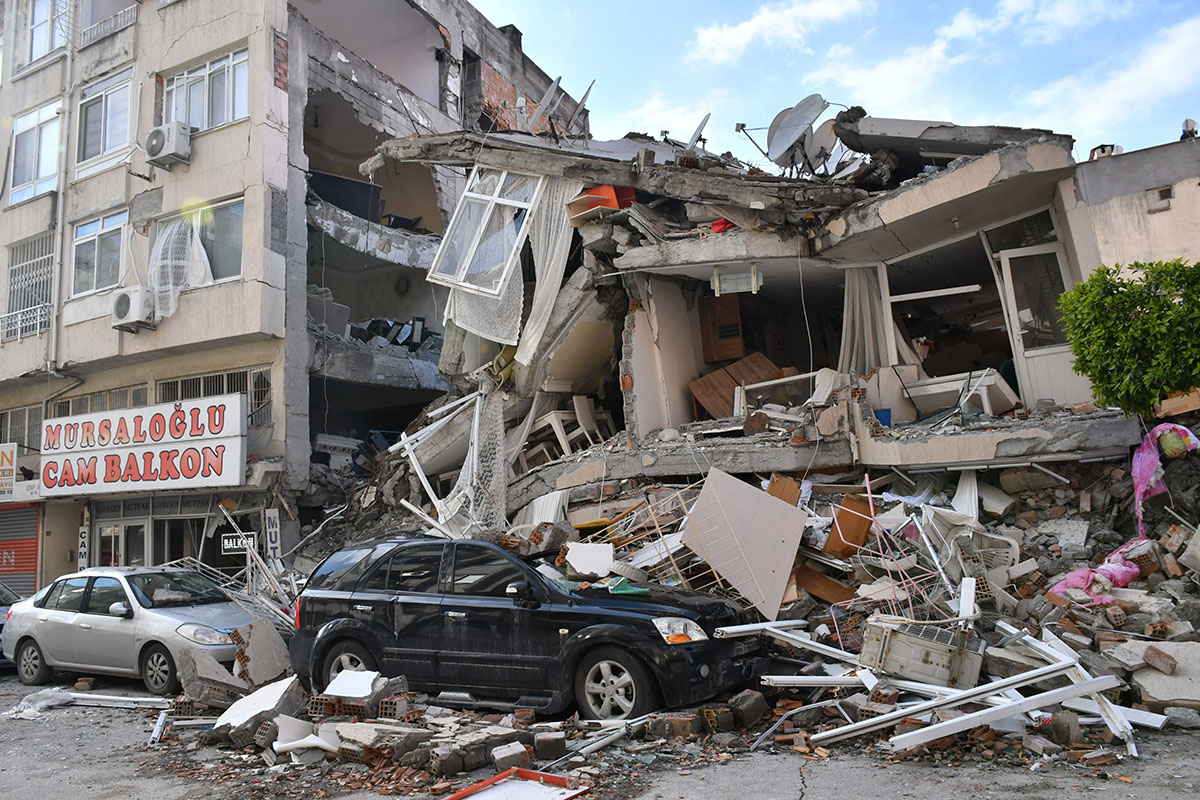
Image © Çağlar Oskay via Unsplash
Bülent Batuman: "The failure to create earthquake-resistant cities is very much related to the political economy of the production of space"
Bülent Batuman, Chair of the Department of Urban Design and Landscape Architecture and Associate Dean of the Faculty of Art, Design and Architecture at Bilkent University, stressed that the main reason of the destruction was the failure of the "political economy of the production of space."
"It is not an issue of availability of materials, technology or technical know-how" in the production process, explained Bilkent University Associate Professor Bülent Batuman.
"The failure to create earthquake-resistant cities is very much related to the political economy of the production of space which encourages profiting from construction as well as settlement," said Batuman.
According to the architect, he told WAC that after visiting earthquake zones, "construction" and "settlement" can head the two main reasons of the destruction.
"The reasons related to construction concern low quality, reduced technical capacity in small towns, and unnecessary building heights," he explained.
"We should also add here the fact that old buildings, which were supposed to be reinforced or replaced, have not been eliminated."
"The reasons regarding settlement are complicated in nature; this is mainly about the local coalitions seeking land rent manipulating municipalities and opening agricultural lands to construction. This also has resulted in devastating consequences," he added.
"Poor construction of structural elements, double floor heights on ground floors making buildings vulnerable, poor structural design of apartments" can be listed as typical construction failures resulting in collapse, according to the architect. These findings were also included in the reports of the Union of Chambers of Turkish Engineers and Architects and the Chamber of Civil Engineers.
"What struck me the most was the 8-10 story-high apartments in small settlements. In places such as Nurdağı and Gölbaşı (with populations of 40 thousand and 30 thousand, respectively) such high-rises produced with low construction quality, resulted in catastrophic consequences," Batuman continued.
"Disaster areas and big cities should be evaluated differently"
According to the architect, provinces in the disaster area and big cities, such as Istanbul, should be evaluated differently, reminding that Adana, Gaziantep and Diyarbakır provinces were minimally affected.
"In major cities, the existing building stock is a huge problem," said Batuman. "In the mid-size cities of the disaster zone, it is the recently-built buildings that performed strikingly badly."
The architect explained the damage in three main reasons: firstly, "the level of capital accumulation for the part of contractors", secondly, "technical know-how of architects and engineers", and thirdly, "the skills of labor force do not allow for complicated buildings to be built in a way that is earthquake-resilient."
"Each city should have its own urban design guideline"
According to Batuman, "the regulations should be site-specific" and "each city should have its own urban design guideline rather than a construction code that is valid across the country."
"The planning mechanisms should be revised in order to prevent populist pressure on urban growth," said the architect. "Unless fringe development is controlled, it is very likely that the same failures will be reproduced in these settlements."
"In this way, we may be able to prevent small towns imitating large cities," Batuman concluded.
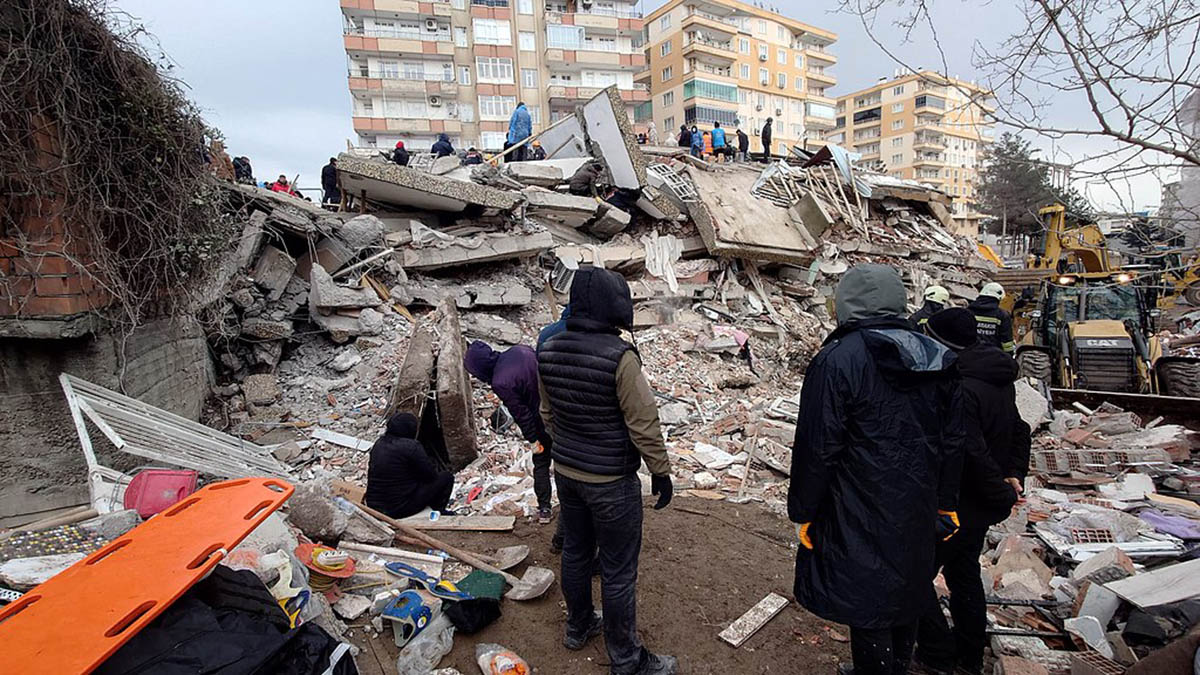
A collapsed building in Diyarbakır, 300 km from the epicenter on February 6. Image by VOA
Semra Uygur: "Urban spaces are being politicized"
Architect Semra Uygur, founding part of Ankara-based practice Uygur Architects, agreed, explaining that "urban spaces are being politicized"
"As secularism is consciously disregarded, respect for knowledge and intellect is systematically collapsing. The political authorities are taking advantage of this fatalistic mindset of society for their own benefit," Uygur explained.
The architect underlined that the construction industry in Turkey is used "as a means of making money" and that there is no control of mechanism, which eventually resulted in corruption.
"Systemic and societal destruction"
"The collapse of educational system, the opening of numerous incompetent universities without sufficient teaching staff and technical infrastructure, allowing graduates with insufficient technical knowledge to immediately obtain project authorization without any qualification requirements, the lack of parallel inspections by relevant professional associations, and the failure to raise awareness among colleagues, and all of these are a systemic and societal destruction," said the architect.
Semra Uygur, who founded Uygur Architects in 1986 with Özcan Uygur, stated that "the real problem is the uninformed public and, above all, the political will."
She also described the government's implementation of "construction amnesty" and "urban renewal" programs "solely to get votes from the public" which was a huge and unacceptable mistake.
"The public, enticed by the prospect of legalizing their illegal structures, unknowingly brought disaster upon themselves through the urban renewal program," Uygur continued.
"It is essential to urgently regulate the system to ensure that these services are carried out by competent individuals across the country without being manipulated by politics."
"Planning and construction should be supervised by experts"
The architect argued that the earthquake zones should not be intervened and planning and construction should be supervised by experts.
"Until the cities are revived, healthy temporary shelters for people and animals should be designed with a proper city concept that includes neighbourhoods, streets, gathering places, and necessary social facilities, rather than mere military barracks," the architect added.
Criticising architectural education, the architect stated that "it is urgently necessary to introduce a competency exam and/or experience requirement for graduates of urbanization and building-related professions." "Project-making authority should never be granted immediately after graduation."
"These professional groups that have gained competence should be arranged to be distributed proportionally to population density across the country. A mandatory service system should be implemented to ensure that competent individuals' knowledge is equally utilized throughout the country," Uygur concluded.
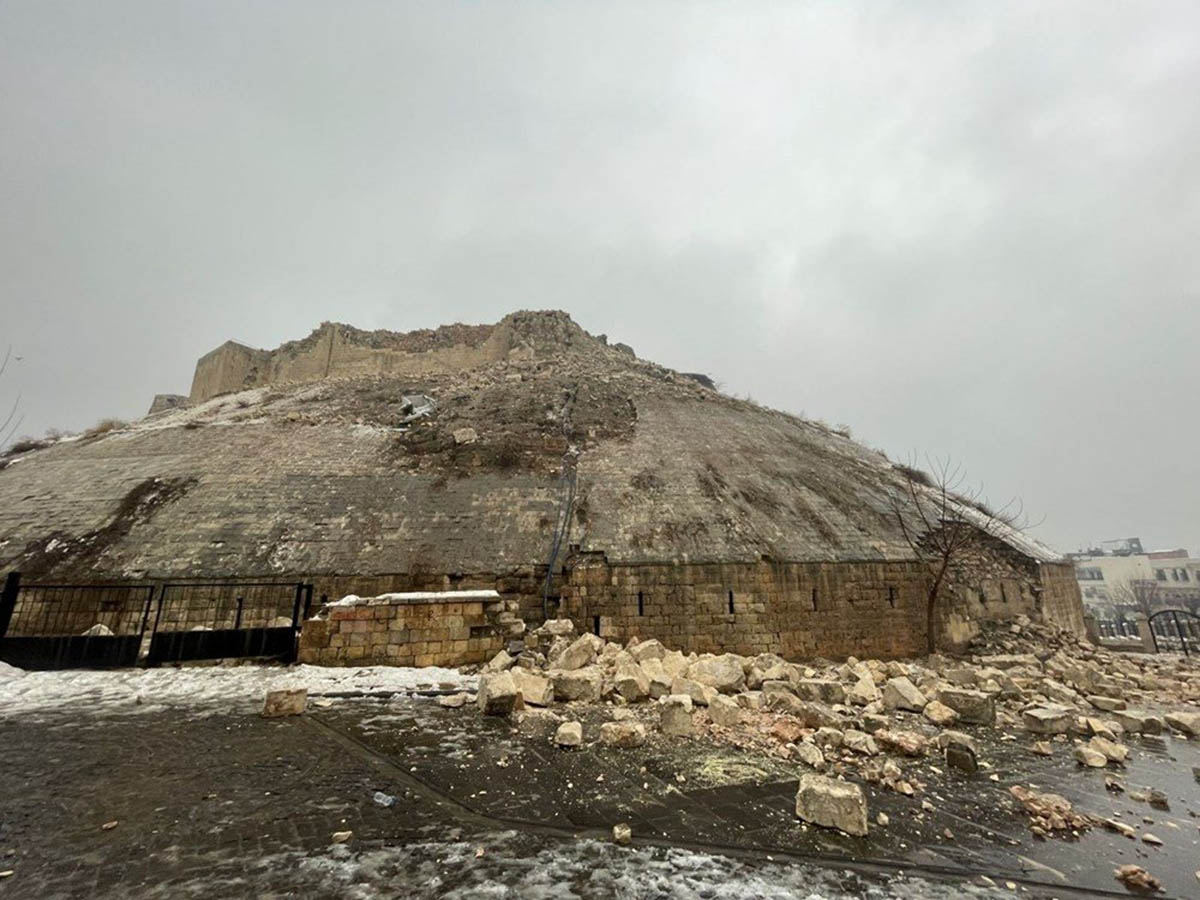
Gaziantep Castle's walls were destroyed after the earhquake on February 6, 2023. Image © DHA Photo via Daily Sabah
Gökhan Avcıoğlu: "Corruption, inadequate resources, or lack of political will"
Architect Gökhan Avcioğlu, the founder of GAD Architecture, emphasized that many buildings in Turkey, built before the introduction of seismic building codes in the 1990s, were not built to withstand seismic activity.
The country's social and economic conditions are also another reasons, according to Avcioğlu.
"Many people live in overcrowded and poorly constructed buildings, particularly in urban areas, where the demand for affordable housing is high," Avcioğlu explained.
"The lack of resources and infrastructure, as well as poor emergency preparedness, further helped to exacerbate the impact of earthquakes on vulnerable populations that suffer from socio-economic limitations."
The architect explained the reasons of the destruction caused by the earthquake in the production process with five main headings: "Weak enforcement of building codes in Turkey, inadequate seismic design criteria, lack of qualified professionals, poor-quality construction materials and lack of oversight and inspection."
For Avcioğlu, "building codes that require structures to be built to withstand seismic activity are only effective if they are enforced."
"In many cases, building codes may exist on paper but are not enforced due to corruption, inadequate resources, or lack of political will."
"Inadequate seismic design criteria"
Emphasizing "inadequate seismic design criteria", Avcioğlu paid attention to the validity of building codes, and he said that "building codes that specify seismic design criteria may be inadequate or not updated to reflect the latest scientific research on earthquake-resistant design. This can lead to structures that are built to outdated or insufficient standards."
Avcioğlu, who agreed with fellow architects, added that "temporary housing solutions, such as prefabricated modular houses, container houses or tents, should be provided and rapid construction should be avoided."
"Retrofitting existing buildings, design and construction of earthquake-resistant buildings, developing earthquake early warning systems and developing emergency response plans" should be implemented as part of permanent recovery plans, explained the architect.
Avcioğlu also mentioned about GAD's new book, titled Disaster Resistant Architecture, which will be published soon. The book will "examine the spatial dimension of diversity in Anatolia and the world and evaluates the development, change, and differences in settlement and housing typologies that stood against natural disasters within the historical development process, together with civilizations in interaction," the architect concluded.
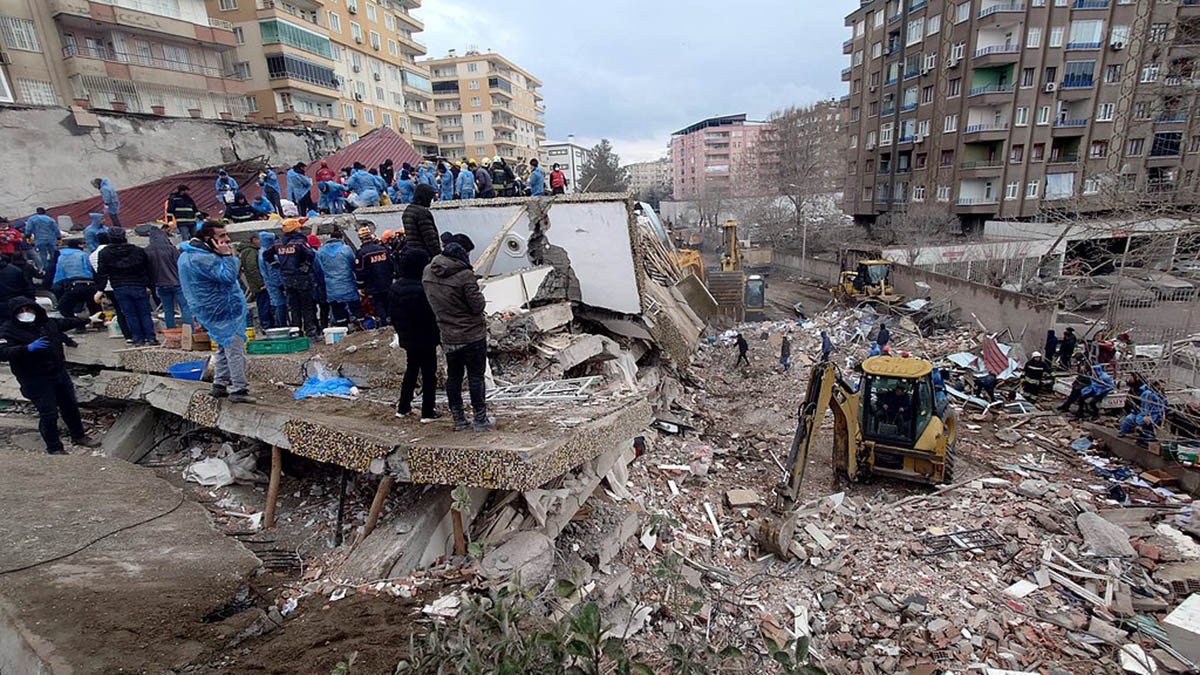
The cleanup of the wreckage of a collapsed building, Diyarbakır, Turkey, 6 February 2023. Image by Voice of America (Public Domain) via Wikipedia.
Sevince Bayrak: "Antakya needs a well-planned rehabilitation process"
Sevince Bayrak, co-founder of Istanbul-based practice SO?, emphasized that after the devastating earthquakes, the construction of cities will take time, especially for Turkey, which has seen many earthquakes before.
"Almost 13.5 million people were affected by the earthquakes which resulted a huge number of earthquake victims who urgently need housing," explained Bayrak, who is also co-curator of the Pavilion of Turkey at the Venice Architecture Biennale 2023.
"After such devastating earthquakes, earthquake victims who have connections (relatives/friends) in other towns or who are economically capable to migrate, leave the damaged cities at least for a couple of years, until the traces of disaster diminish and the city starts to revitalized."
"Many victims spill over the country with a need of housing. In this case, remaking the cities will require a longer period than past earthquakes in our country due to couple of reasons," she added.
Especially, considering the case of Antakya, one of the earthquake provinces, she said that "Antakya, which is a historical city center, and damaged seriously in the earthquake, needs a well-planned rehabilitation process, in order to be able to revitalize the authentic texture of the city."
"This means, more number of eathquake victims needs temporary housing," the architect continued.
"There is a large stock of unused buildings in Turkey"
According to Bayrak, "in this case temporary solutions might even be 3 years", adding that, "as in the previous earthquakes in the region, up to 2 years of living in the containers has been recorded."
Referencing to the theme of Ghost Stories: Carrier Bag Theory of Architecture of the Pavilion of Turkey, where she is curating with Oral Göktaş, Bayrak emphasized that there is a large stock of unused buildings in Turkey with diversified programs, and the existing building stock can be used for earthquake victims.
"Ghost Stories: The Carrier Bag Theory of Architecture is about the transformation of existing structures, we already have a research about the buildings that can be reused for any purpose," she added.
"Housing settlements, hotels, office blocks and many more which are robust and safe, but empty for various reasons now can be used as temporary settlements for earthquake victims."
"There are available public campuses with all facilities yet abandoned because of the privatization of public industries. There are skyscrapers partially or completely emptied just because of a lack of consensus," the architect continued.
"Major cities which are close to earthquake region but are not affected by the earthquake including Mersin, Kayseri or Konya has a serious amount of unused buildings that are waiting to be transformed to useful buildings," Bayrak concluded.
Meanwhile, the Union of Chambers of Turkish Engineers and Architects (TMMOB) and the Chamber of Civil Engineers (TMMOB) revealed their pre-assessments reports related to the destruction of earthquake in affected provinces.
Further, Pritzker Prize-winning architect Shigeru Ban is building paper partition shelters for earthquake victims who lost their homes in the Turkey-Syria earthquake.
Top image: A view from Kahramanmaraş earthquake debris. Photography © Berkan4kardes/Shutterstock.
